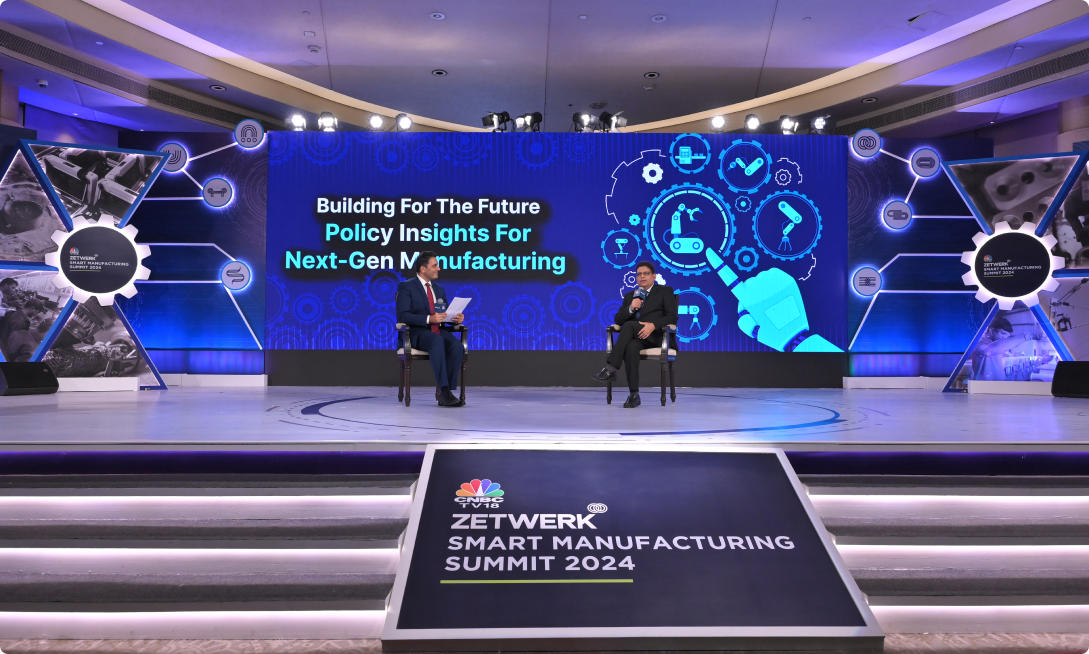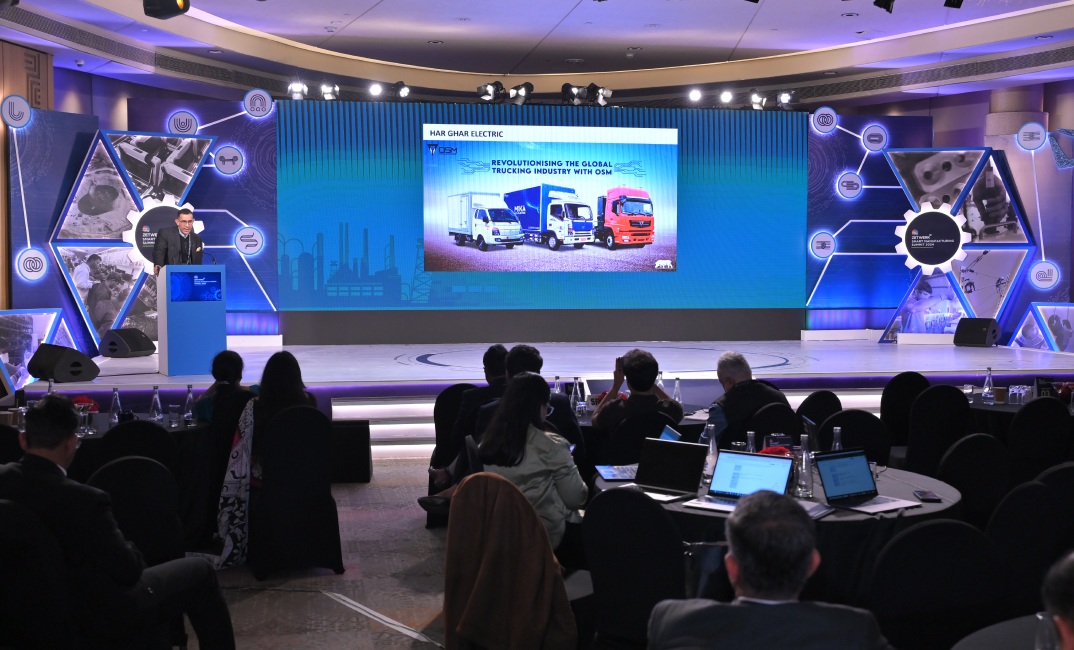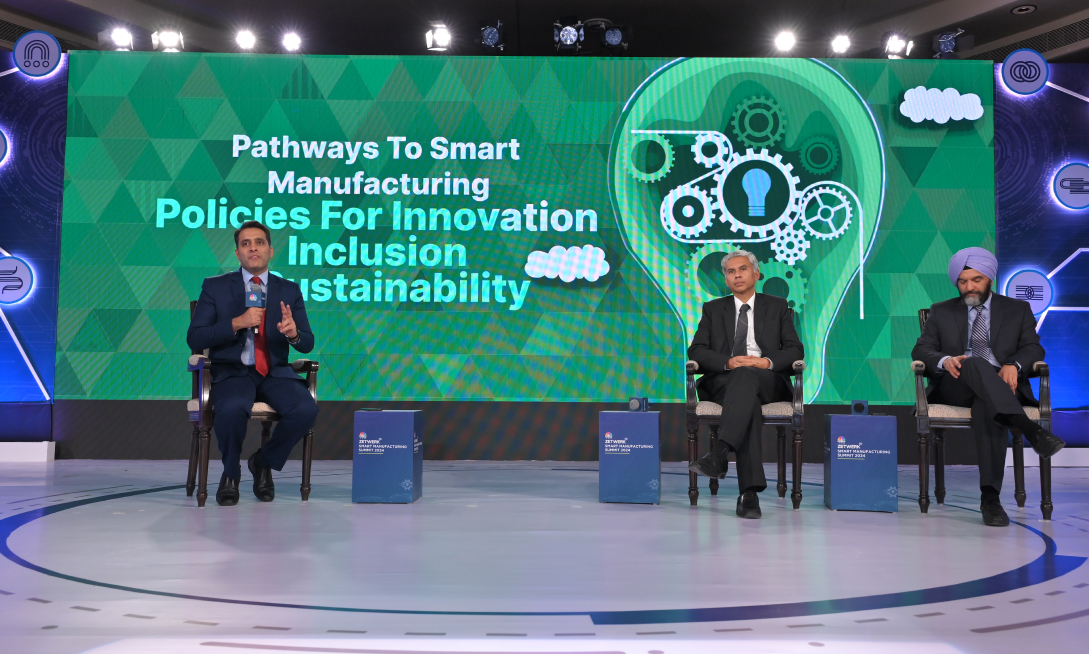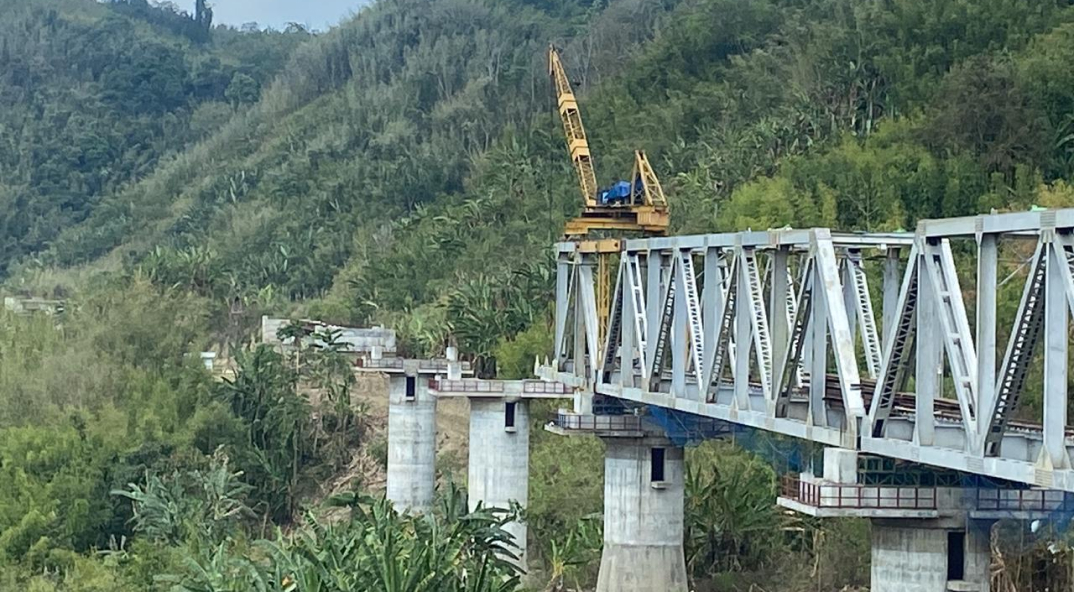Sustainable Manufacturing: Pioneering Pathways Towards India’s $5 Trillion Economy
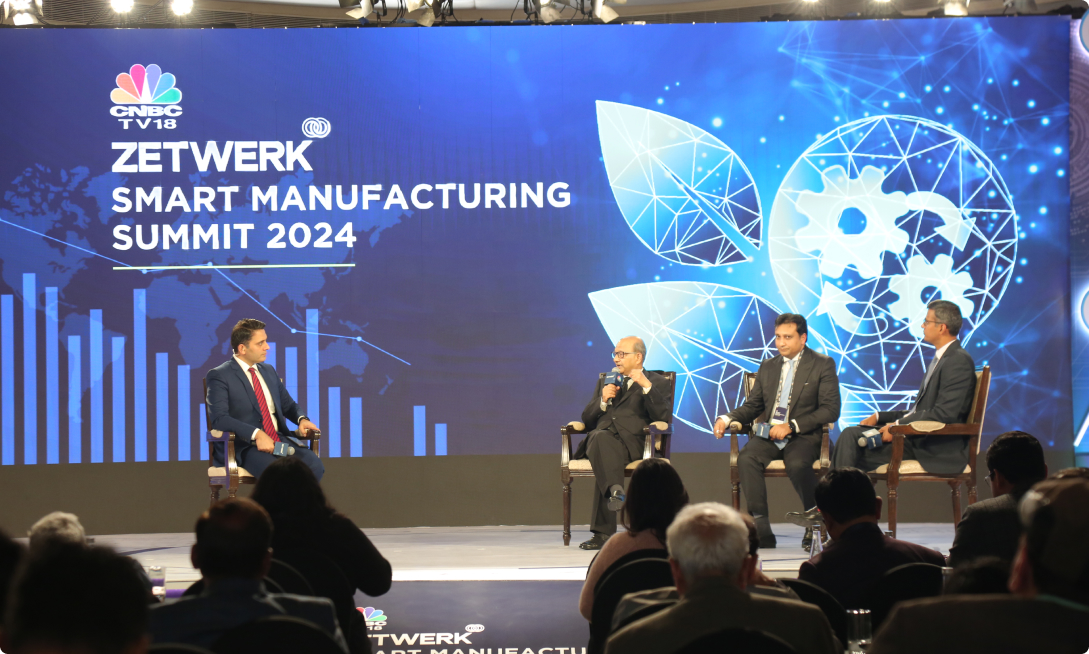
Insights from Industry Leaders on Integrating Sustainability, Export Competitiveness, and Global Standards in India’s Manufacturing Sector
Conversations about sustainable manufacturing have gained significant traction, especially in India’s ambitious goal of reaching a $5 trillion economy. Integrating sustainable practices into manufacturing is no longer a mere option but a necessity driven by global environmental concerns and economic imperatives. In a recent panel discussion with Mr. Parikshit Luthra from CNBC-TV18, Mr. Vinod Agarwal, President of SIAM and MD & CEO of Volvo Eicher Commercial Vehicles, Mr. Pulkit Bhandari, CFO of Zetwerk, and Mr. Vivek Vikram Singh, CEO of Sona Comstar, shed light on the pathways to sustainable manufacturing and its pivotal role in India’s economic growth.
Understanding Smart Manufacturing
Mr. Vinod Agarwal provided a comprehensive definition of smart manufacturing. He emphasized the importance of using fewer natural resources, transitioning to non-fossil fuel-based energy, minimizing waste, and adopting sustainable materials and practices across the manufacturing ecosystem.
Implementing Sustainable Practices
Mr. Vivek Vikram Singh highlighted the proactive measures taken by his company towards sustainable manufacturing. Beyond reducing carbon footprints and energy usage, Sona Comstar aims to “do more of what is good” by focusing on electrification, resource conservation, and upgrading labor skills through intelligent automation.
Economic Implications and Opportunities
The discussion delved into the broader economic landscape, with Mr. Pulkit Bhandari discussing India’s journey towards a $5 trillion economy. He underscored the significance of smart, efficient, and sustainable manufacturing in driving economic growth, highlighting India’s infrastructure development, favorable tax rates, and the potential for increased foreign direct investment (FDI).
Sustainable Practices in Action
Mr. Agarwal elaborated on Volvo Eicher Commercial Vehicles’ sustainable practices, including reducing greenhouse gas emissions, conserving water resources, implementing zero-landfill policies, and focusing on circular economy principles. These initiatives not only align with environmental goals but also contribute to cost savings and operational efficiencies.
Export Competitiveness and Compliance
The conversation pivoted towards export competitiveness and compliance with global sustainability regulations. Mr. Pulkit discussed India’s edge in manufacturing, its robust infrastructure investments, favorable tax regimes, and the need to align with evolving global regulations to maintain export competitiveness.
Challenges and Solutions in Supply Chains
Addressing challenges in supply chains, Mr. Vivek emphasized the need for stringent sustainability standards, especially in tiered supply chains. He highlighted the importance of software-driven solutions for measuring and improving environmental impacts across supply chain tiers.
Regulatory Compliance and International Standards
Mr. Agarwal shed light on regulatory compliance and international standards, particularly about exporting to regions like Europe and North America. He emphasized the need to adhere to stringent environmental and labor regulations, positioning India as a reliable and compliant manufacturing hub.
Navigating Global Trade: The FTA Conundrum
Mr. Parikshit Luthra’s mention of potential FTAs with the US and UK sparked discussions on the challenges of aligning with international standards and producing technologically advanced products that meet global demands. Mr. Agarwal emphasized the need for Indian manufacturers to match international standards, particularly in high-tech sectors like electronics and automotive, where reliance on imports, especially from China, poses a risk to the industry’s continuity.
Balancing Imports and Domestic Production
The conversation pivoted to the delicate balance between imports and domestic production, highlighting the strategic imperatives of reducing dependence on external suppliers for critical components like microprocessors and chips. Mr. Bhandari underscored the efforts to bolster domestic manufacturing capabilities while acknowledging the scale and investment required to achieve self-sufficiency in key technological domains.
Private CapEx and Government Initiatives
The discussion illuminated the role of private capital expenditure (CapEx) in driving manufacturing growth, with Mr. Bhandari citing substantial commitments from private sector entities poised to catalyze economic expansion. Government initiatives such as Production-Linked Incentive (PLI) schemes and strategic public investments were recognized as pivotal in augmenting the CapEx cycle and fostering a conducive environment for industrial development.
Export Dynamics and Global Market Penetration
Insights from Mr. Vivek Vikram Singh shed light on India’s evolving export landscape, particularly in the automotive components sector, emphasizing opportunities in North America and Europe. His remarks underscored the industry’s strategic focus on value-added exports and niche markets, aligning with global trends and leveraging India’s engineering prowess for competitive advantage.
Transition to Electric Vehicles and Sustainable Manufacturing
The conversation concluded with reflections on India’s transition to electric vehicles (EVs) and the imperative of sustainable manufacturing practices. Mr. Agarwal highlighted the gradual nature of this transition, citing challenges such as infrastructure gaps and cost considerations. Mr. Singh emphasized the need for supportive policies to facilitate a just energy transition, advocating for uniform renewable energy policies and stricter emissions regulations.
Risks and Opportunities Ahead
The panelists identified key risks, including employment generation, geopolitical uncertainties, and the imperative of maintaining momentum in manufacturing growth. They underscored the role of capital markets, government support, and technological innovation in navigating these challenges and leveraging India’s manufacturing potential on the global stage.
Closing Thoughts: A Vision for Sustainable Growth
The discussion encapsulated a vision for sustainable growth in India’s manufacturing sector, emphasizing the need for collaborative efforts between industry stakeholders, government agencies, and global partners. By embracing technological advancements, fostering innovation, and prioritizing sustainability, India can chart a resilient path towards becoming a global manufacturing powerhouse while addressing socio-economic imperatives such as job creation and environmental stewardship.


